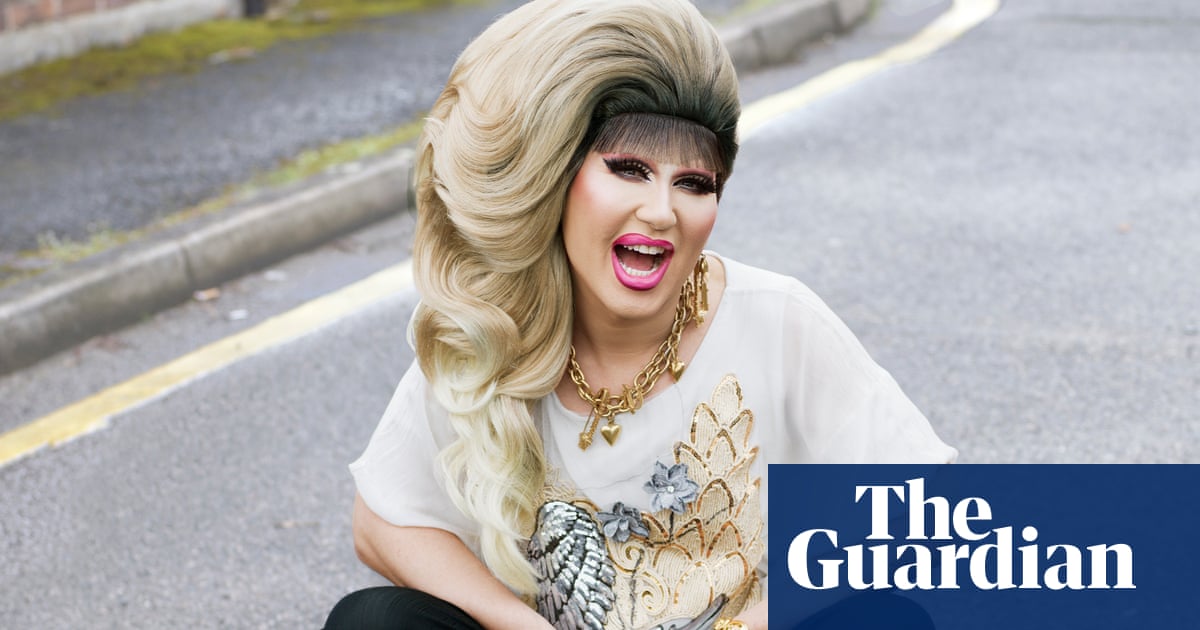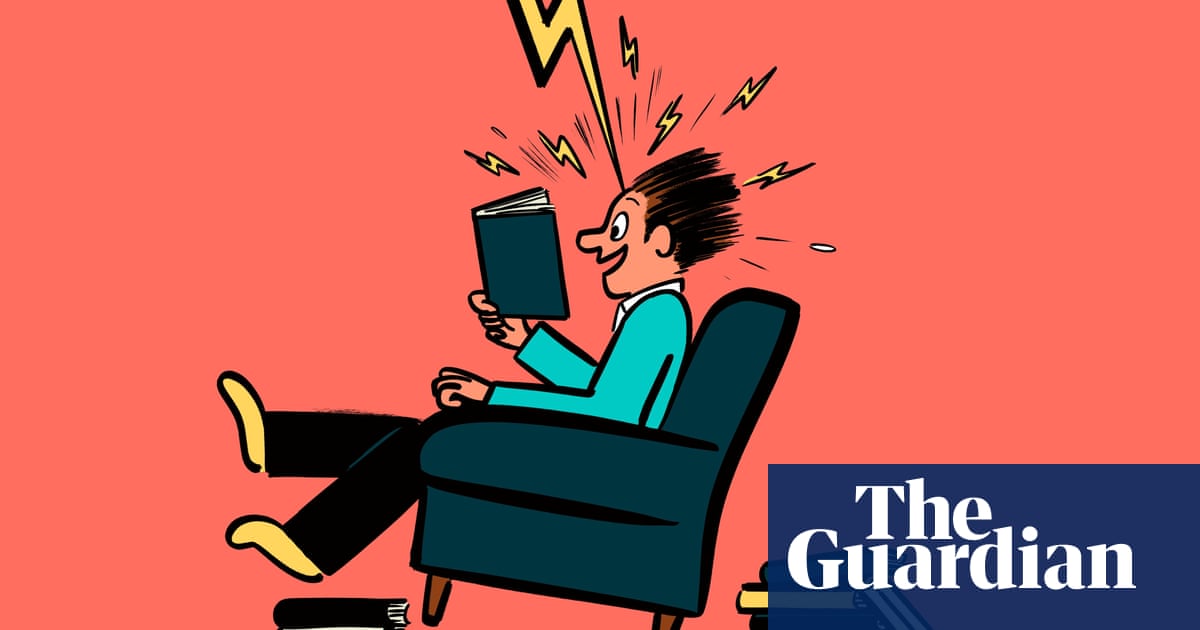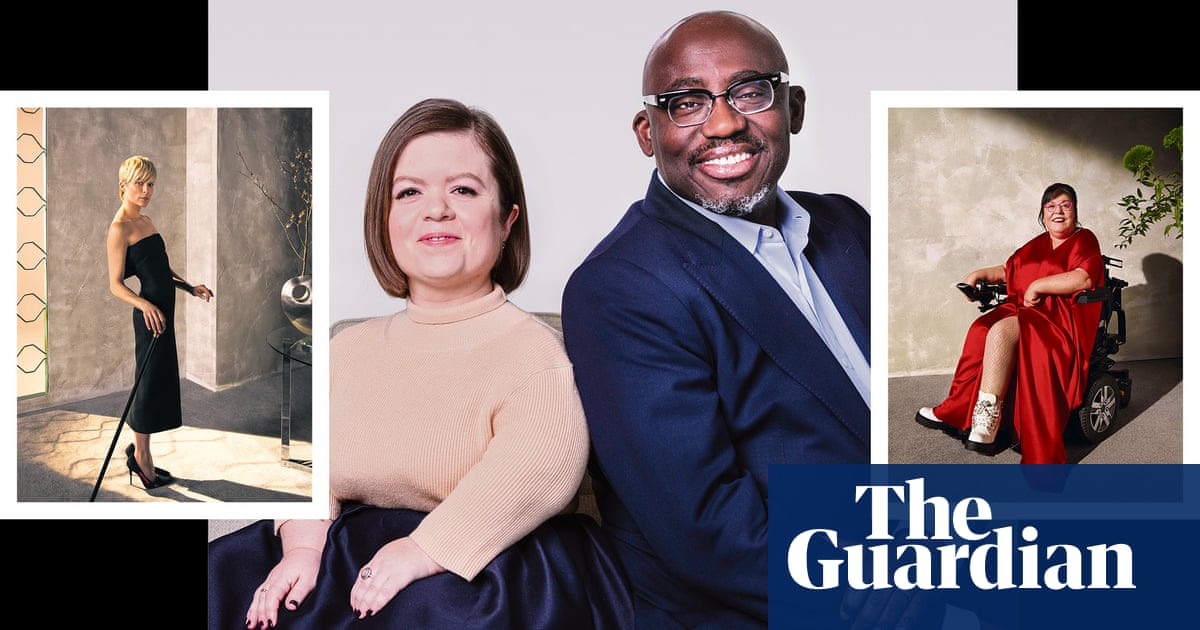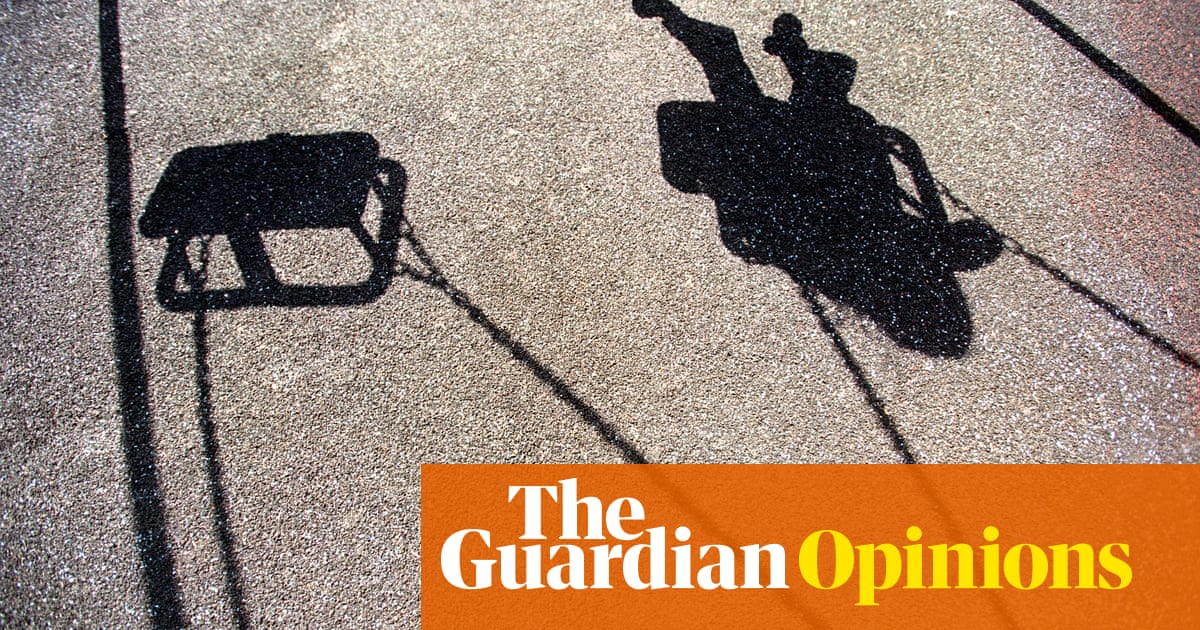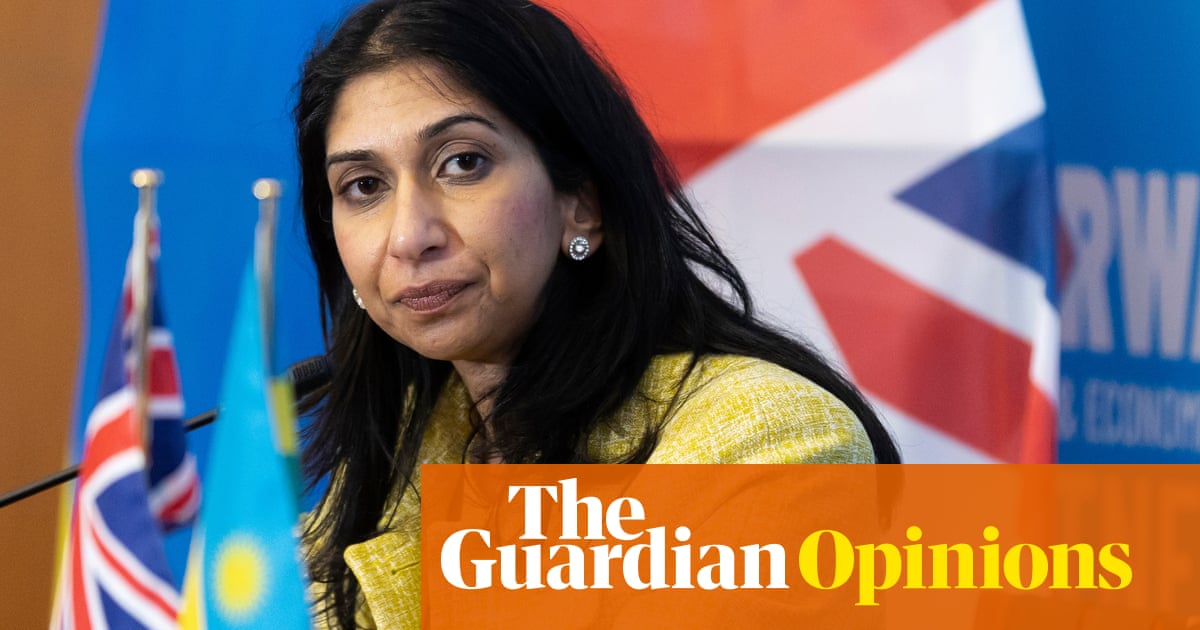
inéad Burke almost didn’t talk about fashion and disability at the behest of the Obamas in September 2016, having mistaken their invitation to the White House Design For All showcase for a phishing scam. A polite email nudging the then 26-year-old Irish teacher and disability advocate for her RSVP did the trick, leaving Burke with two dilemmas: “First, what would I say, and second, what would I wear?”
Burke – who had a fashion industry-focused blog called Minnie Mélange – is a little person, the term she favours when referencing her achondroplasia, the most common form of dwarfism, that means she has shorter-than-average limbs. Desirable frocks and footwear are hard to come by, she says, when you’re 3ft 5in and “a size 12 in the children’s shoe department.”
As a clothes-obsessed teenager, shopping with her four younger siblings – all of whom are “average height” – was tantalising and demoralising by turns. “I understood that one of the functions of fashion is to symbolise maturity, yet it wasn’t something I could participate in,” she says. Rails were beyond reach; clothes needed tailoring. The curvature of Burke’s spine means “the back of a skirt or a dress needs to be 2in longer in order to sit evenly.”
With the White House engagement approaching, Burke mentioned on Twitter that she was seeking a small dress for a big do. Producer Moya Doherty saw the tweet, and arranged for a beautiful gown to be made in the costume department of Riverdance – a fact Burke says amused her no end when it came to the perennial American red carpet question “Who are you wearing?” On the same trip, she delivered an impromptu speech at an event in New York that caught the attention of a scout for TED conferences. Burke’s ensuing TED Talk, Why Design Should Include Everyone, has been viewed more than 1.5m times.
Burke recently published Break the Mould, the children’s book she wrote in lockdown. It’s four years since that fateful US trip, and she still has the White House M&Ms in her fridge. In terms of occasion wear, her observation that she has “options” these days is putting it mildly. Her trajectory from part-time fashion blogger to globetrotting style maven and cross-platform icon of inclusivity has garnered a wardrobe of bespoke looks by the likes of Dior and Prada. Encountering Burke has also been a transformative experience for the fashion powerhouses she is wont to gladhand – something she does with the practised self-possession of one who (as she explained in her Ted Talk) has to enlist a stranger to stand guard every time she uses a public bathroom cubicle.
When she launched her podcast As Me with Sinéad, Victoria Beckham was the inaugural interviewee. Having met Burke front row at Burberry, British Vogue editor-in-chief Edward Enninful appointed her as contributing editor, advising on “fashion through a disability lens”. An encounter with Marco Bizzarri, head of the $10bn Gucci group, led to an ongoing association that saw Burke walking the pink stairs of last year’s Met Gala in a custom bow-embellished velvet dress from Gucci’s Cruise collection. This made her the first little person in history to attend the fashion world’s equivalent of the Oscars.
Beforehand, she led Condé Nast’s Anna Wintour in an accessibility audit of the venue, but was so “violently unwell” with nerves she can’t remember whether Wintour removed her trademark shades. A glamorous footstool matched to the gala’s furniture helped Burke hobnob unaided with the likes of Harry Styles and Serena Williams, and she ended the night dancing with Katy Perry around the immersive Moschino hamburger from which the pop star had emerged. Burke’s dress now hangs in the Gucci Garden museum in Florence, alongside other landmark outfits from the house’s history.
Perfect material, you’d think, for a frothy fashion fairytale. But with her book, Burke has created something substantial. Subtitled How To Take Your Place in the World, it’s a zero-hocus instruction manual for successful self-actualisation that its author hopes will encourage young readers “to understand that they are enough as they are, and the responsibility we each have to make the world a more equitable and accessible place”. The president of Ireland, Michael D Higgins, has deemed it “very important”. Burke sits on Higgins’s Council of State, which, she explains to junior readers, is “a group of people he calls on whenever there is a big decision to be made”. Talking from her parents’ house in Navan, County Meath – her brother and sisters (three of whom are optometrists) have left her in charge of the family Jack Russell, Cookie, and a stream of internet purchases which sees her occasionally heading for the door – Burke is superb company, even over Zoom. Her eyes widen with campy astonishment as we exchange fashion industry anecdotes, and she’s affably sarcastic. “Obviously what the world needs is another white woman with a Netflix special,” is her reply when asked about broadcasting prospects.
The book starts with Burke’s journey to becoming a teacher, an ambition she articulated on her first day of school. She marched to the front of the class, explained achondroplasia and spelled it for her classmates. Because she has “the privilege of being a loved child” and because Burke’s father, Chris, is a fulfilled fellow little person, she says it never occurred to her that she wasn’t capable of achieving her goals. It was always a case “of finding new ways in”. Aged 11, she decided against limb-lengthening surgery, a decision she examines in the book. On one side of the page she enumerates the pros of undergoing the procedure: the avoidance of playground jibes, the ability to reach light switches, not needing a head start in the egg-and-spoon race and so on. There’s just one entry in the other column, but it’s a powerful one, rendered in beam-emitting capitals: “BEING ME.”
That the Irish dictionary even contains an equivalent term for little person – duine beag – is down to Burke, who contacted Foras na Gaeilge, the organisation for Gaelic linguistic development, after the discomfiting experience of having to describe herself as “a dwarf” during her teacher training exams. “In just three days, I had changed the language,” she writes, before informing readers that, since language is always in flux, they, too, “have the power to make a difference and teach your friends and family new, kinder words.” Burke’s father Chris and her average-height mother Kath, founded Little People of Ireland in 1998, an organisation, which Burke says, “recognises that questions of identity go much further than the person who is primarily affected”.
As a teacher, she engaged her 11 and 12-year-old charges by being forthright about her experiences and rearranging the classroom furniture so she could address them at eye level, which “transformed the power dynamic”.
Throughout her own formative years she keenly felt the absence of media representation for little people outside of the denizens of Hogwarts or Westeros, most of whom were male, not to mention imaginary. “I am almost 30 and I have never been to a library or a bookshop and picked up a book with someone like me on the cover,” she tells me.
Interspersed throughout her book are stories of change-makers from the deaf sound-drawing artist Christine Sun Kim to New Zealand prime minister Jacinda Ardern, whom Burke met and befriended at the World Economic Forum at Davos in 2019, where she led four speaking sessions. “Casual!” she says when it’s brought up. The resources section at the back of Breaking the Mould refers readers to organisations including Black Lives Matter and Mermaids, the support centre for transgender youth. In one chapter, a giant speech bubble proclaims: “It’s OK to be gay.”
“I would never want to speak on behalf of groups that I am not a member of,” she says, “but being able to write a book is such a privilege and I wrote it for anyone who has, for any reason, felt like an ‘other’ in their life.”
In the summer of 2019, Burke was in Malta on holiday with her family when Vogue emailed to ask if she could take an important call from Enninful. Accustomed to their over-achieving eldest sister’s reluctance to switch off, her siblings were unimpressed when she marched them into a branch of McDonald’s in search of wifi. She was talking Enninful through the finer points of her Big Mac (“extra pickles, extra cheese”) when, to her astonishment, he introduced Meghan, Duchess of Sussex, who duly invited Burke to appear on the cover of the magazine’s “Forces for Change” issue, which the royal was guest editing. “When I said, ‘Hello Duchess,’ I think my family realised it was probably a good choice to take the call,” she says.
Burke rises at 6am. “The first thing I do is read the Financial Times, Women’s Wear Daily, Business of Fashion and Vogue Business,” she says. She’s always thinking, she says, of the images not being published, the voices and perspectives which are absent. When New York Times fashion critic Vanessa Friedman wrote a piece describing disability as fashion’s final frontier, but including no conversations with disabled people, Burke sent her an email and the two became friends. “It’s not about being controversial for the sake of it, but it’s not about being passive, either,” she says of her newfound “insider-outsider” status.
The combined spending power of the disabled market, Burke likes to point out, is as big as China’s, yet it is chronically underserved by the fashion industry. “Knowing that, my goal was never to create a line of clothing that I could wear,” she says. “Rather, it was to change the entire system – which tells you everything you need to know about my personality, really.”
Burke was born in 1990, the year Mary Robinson took office as president and declared, “I was elected by the women of Ireland who instead of rocking the cradle, rocked the system.” She feels fortunate to belong to a post-Troubles generation that has seen unprecedented societal change, notably in the form of the legalisation of gay marriage in 2015 and the liberalisation of abortion law in 2018.
“Ireland has changed so much, and that’s partly due to the influx of technology companies,” she says. “But ultimately I think the change comes down to the bravery of ordinary people who chose to have difficult conversations around dining tables. What really brought about marriage equality and women’s bodily autonomy was families talking about their children wanting to get married. It was women confiding in their families, saying, ‘When I was 16, I needed or wanted an abortion.’” Still, she says, there remains “much more work to do for Ireland to become a truly inclusive society”.
Burke is straight, but feels kinship with the LGBTQ+ community in Dublin and is an Alternative Miss Ireland emeritus – a title typically awarded to a drag performer. Having endured ridicule, intimidation and sexual harassment in mainstream clubs (a man once unzipped his fly in her face for the amusement of his mates), she remembers dancing uninhibitedly for the first time at the George, Dublin’s most famous gay venue, during her student days. The track was Madonna’s Vogue. “I was moved by the fact I wasn’t being observed by anybody, because within that club, most people were different or had a visceral understanding of how it feels to be made to feel different in a way that was not positive,” she says.
Distant family members attending her 21st birthday were perplexed by the predominance of drag queens doing the Macarena. “Some of them were like, is this the act?” she says. “My dad was like, no, these are Sinéad’s friends.”
It’s not unreasonable to think she might harbour political aspirations beyond her Council of State role. She’s got the Rolodex for it and you can be president of Ireland at 35 – leaving a few years to get her immaculately dressed ducks in a row. “To be honest, I often ask myself – as many activists and advocates do – whether I can have a greater impact working outside of that system or within it,” she says. She would struggle with the question of “which political party would you align yourself with – which best fits your moral compass and your political beliefs” and whether to do so would be limiting. She’s wary, too, of the lurching vicissitudes of life in the public eye and the “swinging pendulum” of social media approval, “which rarely finds equilibrium”.
In other words, a faultless politician’s response. For now, though, she says, “I’m comfortable where I am, but I’m looking forward to leaning into the space I need to take up.”
Break the Mould by Sinéad Burke is out now (Wren & Rook, £8.99). Buy it for £8.36 from guardianbookshop.com





